If you were to travel to Lithuania you might encounter some traditional houses adorned with the motif of two horse heads. You might take this as a simple design but it is in fact a small clue to Lithuania’s deep and ancient Vedic past.
Traditionally, the Vedic peoples of Lithuania worshipped the Ašvieniai, the divine horse twins, related to the goddess Ūsinis. They are said to pull the Sun Chariot through the sky. The Lithuanian people continue to adorn their roof tops with the symbol of the divine horse twins in order to receive protection for the household.
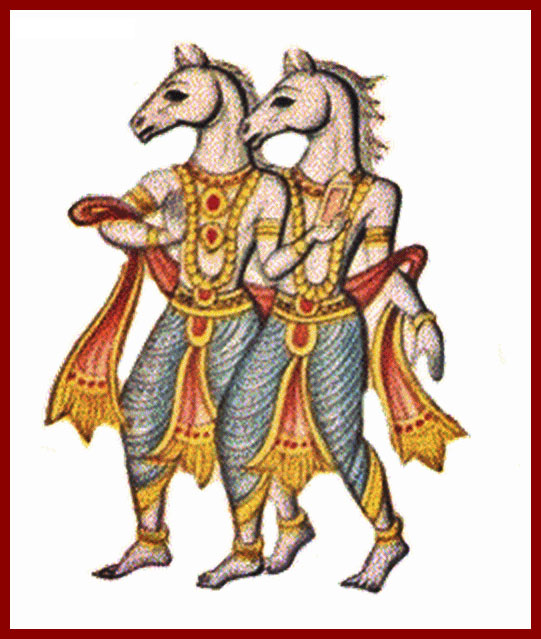
In India the complete Vedic tradition has been preserved. There the divine horse twins are known as the Ashvins, the children of the Sun god Surya, who are summoned by the goddess Ushas (morning dawn) and appear as the morning and evening sunlight. They are often known as Nasatya (Kind, Helpful) and Dasra (Enlightened Giving). They are practitioners of Ayurveda as the doctors of the devas (demigods), and it is for this reason that people adorn their roofs with their image – so that the residing family may remain healthy. They are most notable for granting the divine twins of King Pandu – Nakula and Sahadev, who along with Yudhisthira, Bhima, and Arjuna made up the Pandavas of the Mahabharata.
Lithuanian is very archaic and has preserved linguistically a great deal from Sanskrit, the original Mother Language of Europe. Below are a few examples of the linguistic similarities:
Asva(Lithuanian)=Ashva(Sanskrit) meaning ‘horse’
Dievas (Lithuanian)=Devas (Sanskrit) meaning ‘gods’, ‘the shining ones’;
Dumas (Lithuanian)=Dhumas(Sanskrit) meaning ‘smoke’
Sunus (Lithuanian)=Sunus(Sanskrit) meaning ‘son’
Vyras(Lithuanian)=Viras(Sanskrit) meaning ‘man’
Padas(Lithuanian)=Padas(Sanskrit) meaning ‘sole of the foot’
Ugnis(Lithuanian)=Agnis(Sanskrit) meaning ‘fire’
Vilkas(Lithuanian)=Vrkas(Sanskrit) meaning ‘wolf’
Ratas(Lithuanian)=Rathas(Sanskrit) meaning ‘carriage’
Senis(Lithuanian)=Sanas(Sanskrit) meaning ‘old’
Dantis(Lithuanian)=Dantas(Sanskrit) meaning ‘teeth’
Naktis(Lithuanian)=Naktis(Sanskrit) meaning ‘night’
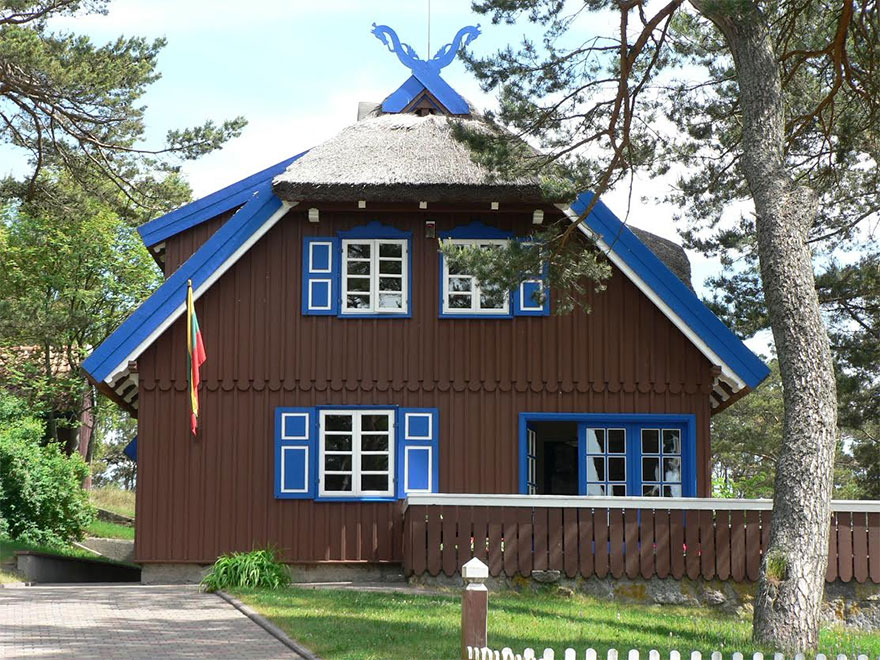
In the Anglo-Saxon tradition also, it is said that two German brothers Hengist (“Stallion”) and Horsa (“Horse”) led the armies that conquered Britain. Many believe this is a continuation of the original tradition of the Vedic horse twins. Similar to Lithuania, you will find the same tradition of horse-headed gables on roofs throughout Germany in honor of Hengist and Horsa.
So the next time you travel through Europe and see these horse gabled roofs, smile and realize their connection to Europe’s ancient Vedic past.
Other Articles by Vaishnava Das:
Sweet Salt – The Story of How India Invented Sugar
India – The Land of Stolen Jewels
The Vedic People of Scandinavia
Soma – Elixir of the Gods
Manu and the Great Deluge
The Samurai: Protectors of the Cow
The Vedic People of Lithuania
The Legends of Tulasi In Christianity
The Mysterious Iron Deity made from a Meteor
Ancient Shiva Linga in Ireland

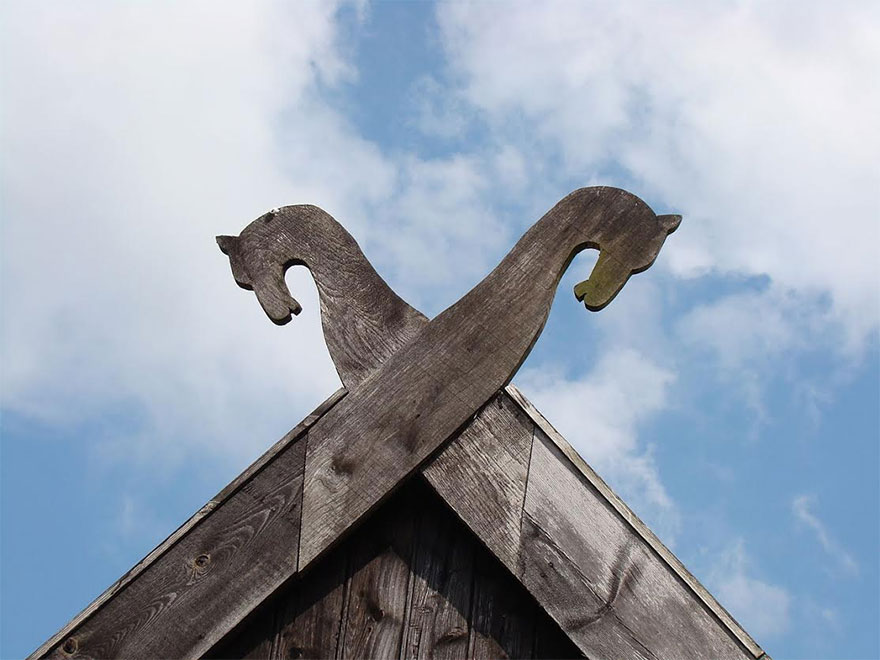

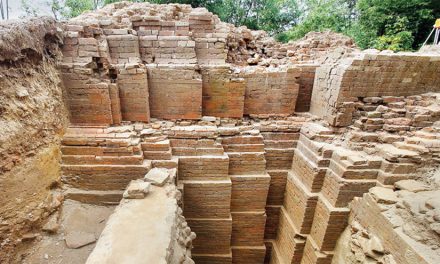

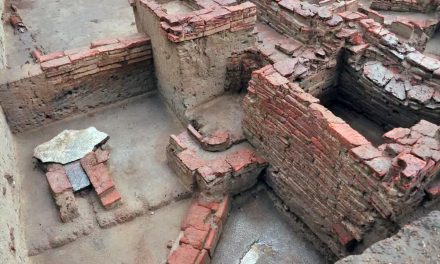









Really enjoyed reading this! Yes, the similarities are a one too many to be sheer coincidence. Who knows, may be they did follow the Vedas.
Like the words of Lithuanians, many words of Russians also sound close to Sanskrit. E.g ‘Tri’ is used (rather than german-likes ‘drei’) for ‘three’ . There should be more similarities.
Is any of Indological Institutes or Sanskrit Pratishthans or Asiatic Societies — in our country working in such ‘language’ related research? Do they have any publications? Why don’t we (Indians / Hindus) start such things rather than wait for another Max Muller to do it for us?
Thanks for the article.
A very interesting article highlighting the link between the vedic Indians and their lithuanian and anglo-saxon cousins and their common religious beliefs!
Thanks to the owner of the website for sharing wonderful and knowledgeable information.
Lovely article.Thanks
great information. observation is useful. great article.
Thank you for this lovely article. I was recently reading an article that there is an attempt to block out Sanskrit completely from its historical classification.
The new classification claims that there was a Proto-Indo-European (PIE) language that was the mother of all languages. This development is rather sad as these people are trying very hard to erase ALL links with Sanskrit and the Vedic past of the Human race. This is not a classification that establishes the truth – rather it suppresses the truth. PIE does not find any mention – there is no PIE literature, no archaeological findings of PIE, no heritage that is available of this anywhere in the world! These new linguists are brazenly pushing this out with ‘peer reviewed’ papers in a tight cabal and their design is perhaps to gradually erase from human memory all vestiges of the Vedic era everywhere. The Vedic era united people, harmonized them; the new forces divide people & make them divorced from Mother Nature and their inner Nature.
I do hope that academicians and other intellectuals recognize this and have the courage to speak up against this deception being played out in the right places. If this is not pointed out, in 30 years, this classification will try to erase Sanskrit from all linguistic studies.
Regarding “proto-indoeuropean”, this is a technique by academics to avoid saying “Vedic”. No scripture has ever been found in proto-indo-european, no text. It is manufactured in academic departments, where professors “reconstruct” based on their imagination what the language “must have been”.
There have been many scholarly exchanges and conferences on the Indo-Baltic commonalities. I am Romuva and our krivis, Jonas Trinkunas, who died a year ago helped to spearhead many of these collaborations. It is fascinating how many similairites there are.
As lithuanian i know even more words with the same meanings in Sanscrit! I recommend you to visit Lithuania, it is very beautifull land with very interesting places. First people in Lithuania started to live here more then 10000 years ago, we are last europiens who became Catolics, before it was a big civilization with a big and rich culture (we call it Baltu kultura) very close to Vedic! But the people from Vatican and etc. during 500 years have destroyed it! Anicha – everything always changing!
Peace and happiness!
I have seen the images of two horses, being carried on staffs, wearing crowns, on ancient Egyptian images at Berlin museum. Again, I say that Egypt was settled by Vedic people from India. Without a doubt.
In fact, up until @ 666 BC, virtually all of the Nile Valley was Vedic, or proto-Hindu. In 666 BC is when the Assyrian/Asura Kanni/Kenites from VasuKanni invaded Egypt, and erased the Vedic images. Bringing their iron/steel weaponry that devastated the cultures across Europe, the levant, northern Africa and Asia, including India.
“Cains” means Blacksmiths. And Vasu may mean “Devi”, meaning it has been twisted into “David’s blacksmiths” that conquered these regions.
You see….”Cain killing Abel” is the Kanni replacing, or “killing” Ba’al.
I have seen with my own eyes a statue of Vishnu at a small village in S.E. Asia, dressed like “Peter Pan” holding a golden chisel and hammer, and the village is called “Vishnu’s carpenters.” So that a culture like the VasuKanni, “Mittani” that worshiped Vedic gods would call themselves “Devi’s blacksmith” is not an impossibility. More like a reasonable conclusion to reach.
Especailly knowing these “Kanni” spoke Luwian, which is Levite. They renamed their conquered land “the Levant” and “Canaan” after their culture.
SANSKRIT > LITHUANIAN > RUSSIAN > ENGLISH:
(please correct if some of the words are wrong. ‘ь’ in Russian means soft consonant. so I mark it with short ‘i’)
1. BHUTIS – BŪTIS – BYTYE (БЫТИЕ) – BEING,
2. DEVAS – DIEVAS – BOG (БОГ) – GOD,
3. VEŠPATS – VIEŠPATS – GOSPODi (ГОСПОДЬ) – LORD,
4. AGNIS – UGNIS – OGONi (ОГОНЬ) – FIRE,
5. MATA – MOTĖ – MATi (МАТЬ) – MOTHER,
6. SUNUS – SŪNUS – SYN (СЫН) – SON,
7. DUHITA – DUKTĖ – DOTCHi (ДОЧЬ) – DAUGHTER,
8. VIRA – VYRAS – MUJCHINA (МУЖЧИНА) – MAN,
9. AVIS – AVIS – OVTSA (ОВЦА) – SHEEP,
10. DHUMAS – DŪMAS – DYM (ДЫМ) – SMOKE,
11. AŠRU – AŠARA – SLEZA (СЛЕЗА) – TEAR,
12. JAVAS – JAVAS – PSHENITSA (ПШЕНИЦА) – WHEAT,
13. MADHUS – MEDUS – MIOD (МЕД) – HONEY,
14. SANAS – SENAS – STARYI (СТАРЫЙ) – OLD,
15. ASMI – ESMI – YESTi (Я ЕСТЬ) – I AM,
16. ASTI – ESTI – YESTi (ОН ЕСТЬ) – HE IS,
17. PADAS – PADAS – PODOSHVA (ПОДОШВА) – SOLE,
18. ŠVAŠURAS – ŠEŠURAS – TYESTi (ТЕСТЬ) – FATHER-IN-LAW.
19. RAMATI – RAMINTI -… – TO REST (refrain)
20. KRAVYA – KRAUJAS – KROVi (КРОВЬ) – BLOOD
21. GRABHATI – GROBTI – GRABITi (ГРАБИТЬ) – TO SEIZE
22. JIVANA – GYVENIMAS – JIZNi (ЖИЗНЬ) – LIFE
23. NAKTA – NAKTIS – NOTCHi (НОЧЬ) – NIGHT
24. SAMYOGA – SĄJUNGA – SOYUZ (СОЮЗ) – UNION
25. SVA – SAVAS – SVOY (СВОЙ) – ONE’S OWN
26. DVARA – DURYS – DVERi (ДВЕРЬ) – DOOR
27. MANSA – MĖSA – MYASO (МЯСО) – MEAT
28. VADATI – VAIDYTIS – ? – TO ARGUE
29. PRACHHATI – PRAŠYTI – PROSITi (ПРОСИТЬ) – TO ASK
30. RAYATI – LOTI (RIETIS) – LAYATi (ЛАЯТЬ) – TO BARK
31. TUJAJATI – SUŽEISTI – RANITi (РАНИТЬ) – TO HURT
32. VAHATI – VEŽTI – VOZITi (ВОЗИТЬ) – TO CARRY, TRANSPORT
33. KASATE – KOSĖTI – KASHLYATi (КАШЛЯТЬ) – TO COUGH
34. ŠVETATE – ŠVIESTI – SVETETi (СВЕТЕТЬ) – TO SHINE
35. MARATI – MARINTI – MORITi (МОРИТЬ) – TO CAUSE TO DIE
36. BHYASATE – BIJOTI (BAISUS) – BOYATiSA (БОЯТЬСЯ) – TO BE AFRAID
37. UDDADATI – ATIDUOTI – OTDATi (ОТДАТЬ) – TO GIVE AWAY
38. ETATI – EITI – IDTI (ИДТИ) – TO GO
39. MIŠRAYATI – MAIŠYTI (MIŠRAINĖ) – MESHITi (МЕШИТЬ) – TO MIX
40. JANATI – ŽINOTI – ZNATi (ЗНАТЬ) – TO KNOW
41. LIHATI – LAIŽYTI – LIZATi (ЛИЗАТЬ) – TO LICK
42. JIVATI – GYVENTI – JITi (ЖИТЬ) – TO LIVE
43. VARATI – VERTI – ZAKRYVATi (ЗАКРЫВАТЬ (VOROTA – ВОРОТА – GATE)) – TO CLOSE the gate
44. VARTATE – VARTYTI – VERTETi (ВЕРТЕТЬ) – TO REVOLVE
45. MIROTI – MIERUOTI – MERITi (МЕРИТЬ) – TO MEASURE
46. VILUMPATI – IŠLUPTI – VYLUPITi (ВЫЛУПИТЬ) – TO PEEL
47. TANOTI – TEMPTI – TYANUTi (TЯНУТЬ) – TO STRETCH
48. ICCHATI – IEŠKOTI – ISKATi (ИСКАТЬ) – TO SEARCH
49. PRADATTE – PARDUOTI – PRADATi (ПРОДАТЬ) – TO SELL
50. TRASYATI – TARŠYTI – TRESTI (ТРЕСТИ) – TO SHAKE
51. SIDATI – SĖDĖTI – SIDETi (СИДЕТЬ) – TO SIT
52. RODATI – RAUDOTI – RYDATi (РЫДАТЬ) – TO WEEP
53. BUDHYATI – BUDINTI – BUDITi (БУДИТЬ) – TO WAKE UP
54. LIMPYATI – LIPINTI (LIMPA) – LIPNET (ЛИПНЕТ) – TO STICK
55. VIJIVATI – IŠGYVENTI – VYJIVATi (ВЫЖИВАТЬ) – TO REVIVE
56. PLAVATE – PLAUKTI – PLAVATi (ПЛАВАТЬ) – TO SWIM
57. MANATE – MANYTI – MNITi (МНИТЬ) – TO THINK
58. SHASTRA – RAŠTAS – PISMO (ПИСЬМО) – SCRIPTURE
59. TAMAS – TAMSA – TiMA (ТЬМА) – DARKNESS
60. BUDDHA – NUBUDĘS – BODRSTVUYSHCHYI (БОДРСТВУЮЩИЙ) – AWAKEN
61. DVAITA – DVEJYBĖ – DVAYETA (ДВОЕТА) – DUALISM
62. KADA – KADA – KOGDA (КОГДА) – WHEN
63. SADAA – VISADA – VSEGDA (ВСЕГДА) – ALWAYS
64. BHLASATI – BLIZGETI – BLESTATi (БЛЕСТАТЬ) – SHINE
65. ASMI, ASI, ASTI, SMAH, STE- ESMI, ESI, ESTI, ESMA, ESATE – ESTi (ЕСТЬ) – I am, You are, He is, We are
66. AD – ĖDA – YEDA (ЕДА – food) – EATS
67. AUSHTA – …
68. BHRUNA – BERNAS – PARENi (ПАРЕНЬ) – GUY, KID
69. ASMANA – AKMUO (older word – AKMENAS) – KAMENi (КАМЕНЬ) – STONE
70. DINA – DIENA – DENi (ДЕНЬ) – DAY
71. DAMA – NAMAS – DOM (ДОМ) – HOUSE
72. NAVA – NAUJAS – NOVYI (НОВЫЙ) – NEW
73. TVAR – TVARINYS (older word – TVARIS) – TVARi (ТВАРЬ) – THING, CREATURE
74. KATR – KURIS (KATRAS) – KOTORYI (КОТОРЫЙ) – WHICH
75. SVASTIKA – could be Lithuanian – ŠVAISTYKLĖ (, thrower, something that throws ), (ŠVIESTI – to shine)
76. PEHRUNA – PERKŪNAS – PERUN (ПЕРУН) – THUNDER
77. ASHVA – AŠVA (old word for ‘horse’) – LOSHADi (ЛОШАДЬ, КОБЫЛА) – HORSE
and of course:
Sanskrit: -Devas adadat datas, Devas dasyati dhanas.
Lithuanian: -Dievas davė dantis, Dievas duos duonos.
Russian: -Бог дал зубы, Бог даст хлеба.
English: -God gave teeth, God will give bread.
I’ve just collected these words from a various articles over the internet. I’m not a linguist, so the words in sanskrit may contain mistakes. Please correct them if you are a specialist on ancient sanskrit. I’m pretty sure about the other languages.